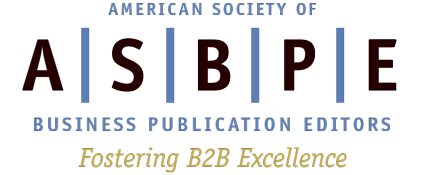 ASBPE’s Ethics Chair Howard Rauch boils bad e-news sites down to the numbers.
ASBPE’s Ethics Chair Howard Rauch boils bad e-news sites down to the numbers.
Some interesting disputes involving creation of original e-news content vs. heavy reliance on the aggregating/curating approach occurred during the past few weeks. My view: The latter approach, while apparently considered the way of the media world, ultimately is not the best practice. On the other hand, that alternative probably is the more convenient way of delivering an informative e-news package.
Both approaches do require creative effort. Meanwhile, however, there is a third contingent in the B2B field that continues to plod a non-creative path. This involves heavy emphasis on no-enterprise, straight rewrite of incoming press announcements. In many cases, the approach, as we know, is not a matter of choice. Resources to do a better job simply are not available.
The unfortunate result: Too many e-news packages that clearly are broke and do need a lot of fixing. For example, consider the accompanying evaluation from my recently completed Phase II, 50-site e-news study. This ten-article package finished worst of show, accumulating 36.7 out of a possible 100 points.
For those of you who missed previous explanations of what the above numbers mean, here’s a quick refresher: IMP = impact; ENT = evidence of enterprise; QUO = number of direct quotes; LEAD = number of words wasted before key story point is reached; FI = Fog Index grade level; ASL = average sentence length; WDS = number of words; LINKS = number of embedded links.
The Fix-It Alert (FIA) calculation shows how many items out of the 80 assessed require obvious improvement. This real-life FIA of 56.3% is the lowest I’ve seen out of 100 e-news packages reviewed to date (including Phase I and Phase II studies). Visually speaking, the boldface clusters immediately indicate major delivery shortfalls. Worst execution ratings are earned by enterprise and basic editing skill (the latter reflected by FI and ASL data).
Unfortunately the above example is hardly an exception. Only six out the 100 sites managed FIA scores below 20.0%. Another 41 sites earned faltering FIA scores of 40.0 percent or beyond. Clearly, the reason most unacceptable performers don’t feel competitive pressure is because the opposition usually is not much better.
The need to raise our quality sites is urgent enough that it will be the lead item in a presentation I’ll deliver at ASBPE’S upcoming ethics webinar this May. We have a terrific slate of speakers on the program. The webinar was postponed this month due to an unexpected angioplasty procedure I had to endure. By May, we will have even more pertinent developments to relay. Hope you can attend!
Meanwhile, for additional comment on ethics and other editorial management matters, please follow me on Twitter: www.twitter.com/editsol.

